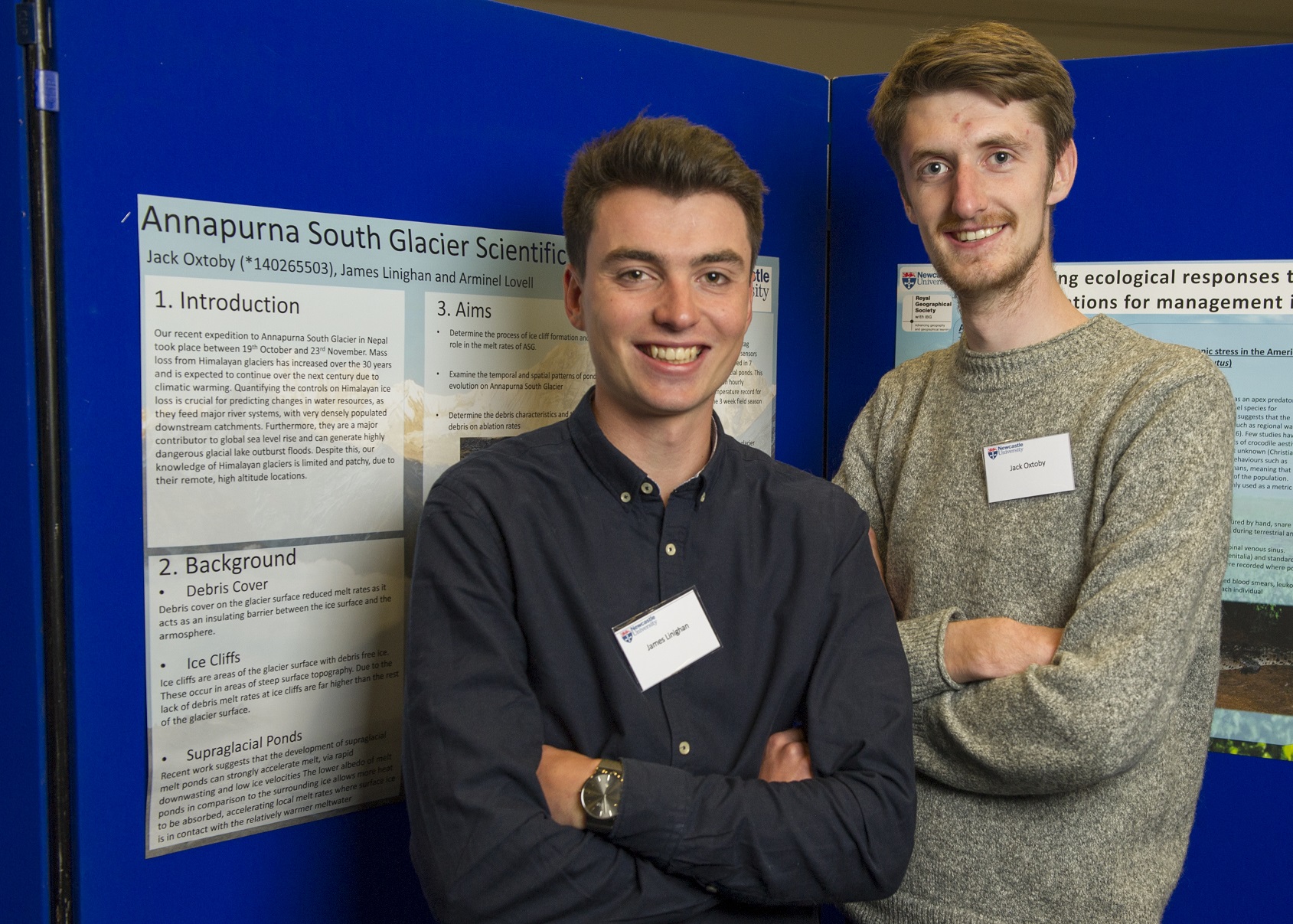2017 Participants
 Jack Oxtoby, James Linighan & Arminel Lovell
Jack Oxtoby, James Linighan & Arminel Lovell
Himalayan glaciers are highly sensitive to climate change and feed major river systems, which supply water to ~800 million people in their densely populated, downstream catchments. Over the past two decades, they have shrunk rapidly and this is forecast to continue throughout the 21st century. Due to the mountainous, active landscape of the Himalayas, rock debris on the ice surface is a key control on the melt rates: a thin layer of debris can accelerate melt, due to its darker colour, whereas thick debris suppresses melting. As such, understanding the influence of debris on glacial behaviour is essential for predicting ice loss from the Himalaya.
Due to their remote, high-altitude locations, our knowledge of Himalayan glaciers is limited and ice losses appear to vary substantially across the mountain range. In particular, the Annapurna-Manaslu region has received very little glaciological study to date, meaning that our work here will produce highly novel datasets and results. Glacial meltwater in this region is very important for local communities, and the tourist industry on which the local economy depends. Thus, improving knowledge of glacial behaviour in the Annapurna-Manaslu region is essential for assessing future glacial hazards and water resources.
Funding Sources: QRA – New Research Workers Award, RGS – Small Research Grant, RGS – Geographical Research Grant, Mount Everest Memorial Fund, Mount Everes Foundation – Alison Chadwick Memorial Grant and the Gilchrist Educational Fund
Supervisor: Dr. Rachel Carr
